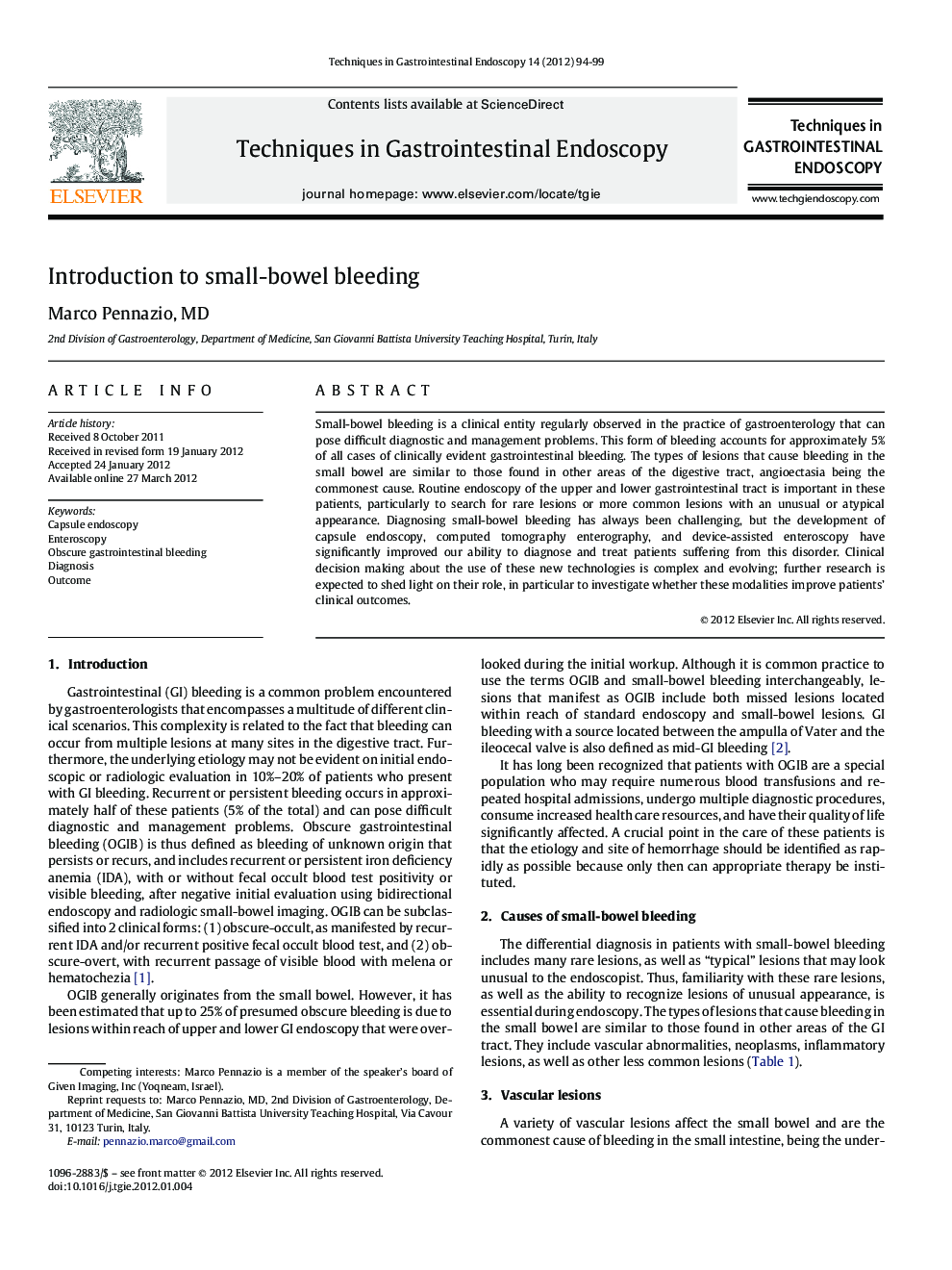| Article ID | Journal | Published Year | Pages | File Type |
|---|---|---|---|---|
| 3322647 | Techniques in Gastrointestinal Endoscopy | 2012 | 6 Pages |
Small-bowel bleeding is a clinical entity regularly observed in the practice of gastroenterology that can pose difficult diagnostic and management problems. This form of bleeding accounts for approximately 5% of all cases of clinically evident gastrointestinal bleeding. The types of lesions that cause bleeding in the small bowel are similar to those found in other areas of the digestive tract, angioectasia being the commonest cause. Routine endoscopy of the upper and lower gastrointestinal tract is important in these patients, particularly to search for rare lesions or more common lesions with an unusual or atypical appearance. Diagnosing small-bowel bleeding has always been challenging, but the development of capsule endoscopy, computed tomography enterography, and device-assisted enteroscopy have significantly improved our ability to diagnose and treat patients suffering from this disorder. Clinical decision making about the use of these new technologies is complex and evolving; further research is expected to shed light on their role, in particular to investigate whether these modalities improve patients' clinical outcomes.
